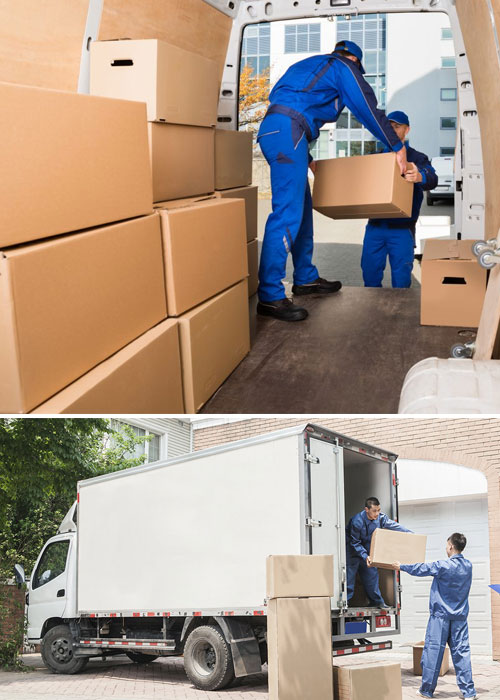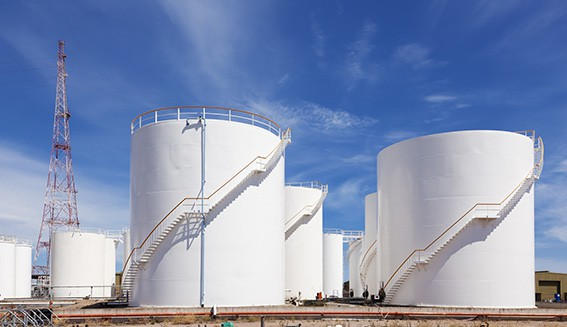Courier Associate (1 years diploma)
Courier Associate click here
Brief job description: The individual would perform handling, sorting, bagging, pickup
and delivery of couriers, collection of payment and reporting of daily activities.
Qualifications Pack for Courier Associate

Elective 1: Perishable Shipment
The individual would check for ambient temperature, perform safe, accurate and
efficient handling of perishables, collect package and inspect product condition, fillup necessary documents, deliver perishables and collect payment
Elective 2: High Value Shipment
The individual would perform safe, accurate and efficient handling of high value
shipment. S/He would collect, inspect, store, and move package with utmost care.
S/he would fill-up necessary documents, deliver the package only to the concerned
person and collect payment where applicable
Elective 3: Furniture and household Shipment
The individual would pack and move furniture and household, place the shipment in
the vehicle, take acknowledgement from customer, check ID card of the recipient,
deliver the shipment, and collect payment
Option 1: GST application
The individual would check the applicability of GST, identify proper classification,
verify details on the invoice and calculate taxable value
Option 2: ERP data management
The individual would collect information, feed information in the ERP system,
review entries made, coordinate with client and internal departments and provide
daily report to the management
Personal Attributes: A courier associate should demonstrate good written and oral
communication in English and vernacular language and should have an eye for
details. S/he should be fit to carry parcels, stand for long duration and open to
travel. S/he should be able to work as per plan along with the operations team
Description
Core Skills/Generic
Skills
Core Skills or Generic Skills are a group of skills that are key to learning and
working in today’s world. These skills are typically needed in any work
environment. In the context of the NOS, these include communication related
skills that are applicable to most job roles.

Function
Function is an activity necessary for achieving the key purpose of the sector,
occupation, or area of work, which can be carried out by a person or a group
of persons. Functions are identified through functional analysis and form the
basis of NOS.
Job role Job role defines a unique set of functions that together form a unique
employment opportunity in an organization.
Knowledge and Understanding
Knowledge and understanding are statements which together specify the
technical, generic, professional and organizational specific knowledge that an
individual needs in order to perform to the required standard.
National Occupational
Standards (NOS) NOS are Occupational Standards which apply uniquely in the Indian context
Electives
Electives are NOS/set of NOS that are identified by the sector as contributive
to specialization in a job role. There may be multiple electives within a QP for
each specialized job role. Trainees must select atleast one elective for the
successful completion of a QP with Electives
Options
Options are NOS/set of NOS that are identified by the sector as additional
skills. there may be multiple options within a QP. It is not mandatory to select
any of the options to complete a QP with Options.
Unit Code Unit code is a unique identifier for an Occupational Standard, which is
denoted by an ‘N’
Unit Title Unit title gives a clear overall statement about what the incumbent should be
able to do.
Occupation Occupation is a set of job roles, which perform similar/related set of functions
in an industry.
Organisational Context
Organisational Context includes the way the organization is structured and
how it operates, including the extent of operative knowledge managers have
of their relevant areas of responsibility.
Performance Criteria Performance Criteria are statements that together specify the standard of
performance required when carrying out a task.
Qualifications
Pack(QP)
Qualifications Pack comprises the set of NOS, together with the educational,
training and other criteria required to perform a job role. A Qualifications
Pack is assigned a unique qualification pack code.
Qualifications Pack
Code
Qualifications Pack Code is a unique reference code that identifies a
qualifications pack.
Scope Scope is the set of statements specifying the range of variables that an
individual may have to deal with in carrying out the function which have a
critical impact on the quality of performance required.
Sector
Sector is a conglomeration of different business operations having similar
businesses and interests. It may also be defined as a distinct subset of the
economy whose components share similar characteristics and interests.
Sub-Sector Sub-sector is derived from a further breakdown based on the characteristics
and interests of its components.
Sub-functions Sub-functions are sub-activities essential to fulfil the achieving the objectives
of the function.
Technical Knowledge Technical Knowledge is the specific knowledge needed to accomplish specific
designated responsibilities.
Description
5S Sort, Set In order, Shine, Standardize and Sustain
ATM Automated teller machine
CGST Central Goods and Services Tax
COD Cash on delivery

ERP Enterprise Resource Planning
GPS Global Positioning System
GST Goods and Services Tax
GSTIN Goods and Services Tax Identification Number
HAZMAT Hazardous Material
HR Human Resources
HSN Harmonised System of Nomenclature
ID Identity document
IGST Integrated Goods and Services Tax
IT Information Technology
LPG Liquefied petroleum gas
MHE Material Handling Equipment
NSQF National Skills Qualifications Framework
OH&S Occupational Health and Safety
OS Occupational Standards
OSHA Occupational Safety and Health Administration
PAN Permanent Account Number
PPE Personal Protective Equipment
QP Qualifications Pack
RFID Radio Frequency Identification Device
SAC Service Accounting Code
SGST State Goods and Services Tax
SOP Standard Operating Procedure
UIN Unique Identification Number
Handling and sorting of mail, shipment bagging
Description This unit is about handling mails, sorting and shipment bagging/ de-bagging activities
Scope This unit/task covers the following:
• Receiving and handling of mail bags
• Shipment de-bagging and sorting
• Shipment bagging and loading
Range: Stationery, Radio Frequency Identification Device (RFID) scanner, bar code
scanner, plastic bags, markers, Personal Protective Equipment (PPEs), Material
Handling Equipment (MHEs), computer, projector, worksheets, SOP, etc.
Performance Criteria(PC) w.r.t. the Scope
Element Performance Criteria
Receiving and
handling of mail bags
To be competent, the user/individual on the job must be able to
PC1. obtain daily count sheet and schedule of inbound/ outbound mail bags
from supervisor for bagging/ de-bagging
PC2. obtain daily trucking schedule and plan for loading/ unloading of trucks
PC3. collect the necessary equipment like barcode scanners, non-production
material, etc. and the necessary PPE
PC4. wear the appropriate PPE before starting the work
PC5. collect the necessary labels, stationery, barcodes, etc. from the executive
PC6. request and arrange for material handling equipments, if required
PC7. verify the truck to be unloaded
PC8. identify the mail bags that need to be unloaded first considering priority list
PC9. unload and move mail bags into the inbound area, manually
PC10. check all mail bags and segregate damaged mail bags
PC11. move all the mail bags into the sorting area
PC12. check if there are any dangerous goods and handle them as per standard
operating procedure (SOP)
Shipment de-bagging
and sorting of mail
To be competent, the user/ individual must be able to:
PC13. scan the bar code stickers of inbound bags and remove bag seal to take out
shipments
PC14. gather shipments to be sorted
PC15. set-up bins/shelves in which the shipments must be sorted
PC16. segregate outbound mails in different buckets based on geography,
shipment type, storage and priority
PC17. segregate inbound mails in different buckets based on geography, shipment
type, storage and priority
PC18. handover sorted mails for shipment bagging/ delivery
PC19. flag damaged and unlabelled shipments
PC20. debag and sort dangerous shipments as per the handling procedure
Shipment bagging
and loading
To be competent, the user/ individual must be able to:
PC21. collect the sorted outbound shipments, place them in the bag and check
condition of shipment
PC22. seal the bag, label it with bar code sticker and other labels
PC23. scan the bar code sticker or label on the bag
PC24. prioritize and move mail bags to the loading area, use MHE if required
PC25. identify and inform any damaged or suspicious shipments
PC26. bag the dangerous goods separately as per SOP
PC27. assist in sampling inspection if required
PC28. load and arrange the mail bags in the assigned truck
Knowledge and understanding (K)
A. Organizational
context
(Knowledge of the
company /
organization and
its processes)
The individual on the job needs to have knowledge of:
KA1. organizational procedures
KA2. different hubs and service stations of the organization
KA3. documentation and reporting as per organization’s mandate
KA4. security procedures to be followed
KA5. escalation matrix for reporting identified problems
KA6. risk and impact of non-compliance with defined processes
KA7. coding system for labeling mails
B. Technical
knowledge
The individual on the job needs to know and understand:
KB1. use of computer and associated equipment like scanner
KB2. geographical spread of states and cities
KB3. 3-digit city codes

KB4. labels and instructions indicating delivery details of the shipment
KB5. types of shipment being handled
KB6. special characteristics and handling requirements of different shipment, if any
KB7. (Hazardous Material) HAZMAT codes and corresponding handling practices
KB8. loading/unloading and transport methods that can be used for different types
of shipments/bags
KB9. shipments packing requirement for various weather and geographical
conditions
KB10. different arrangements of mails to maximize space utilization
Skills (S)
A. Core skills/
generic skills
Reading skills
The user/individual on the job needs to know how to read:
SA1. written instructions
SA2. invoicing label and shipment labels
Writing skills
The user/individual on the job needs to know how to write:
SA3. shipment and sorting details
SA4. report regarding damages, mismatch, etc
Oral communication (listening and speaking skills)
Handling and sorting of mail, shipment bagging
The user/individual on the job needs to know how to communicate:
SA5. with team members and supervisors
SA6. with workers/ team members for delays and updates in schedules
B. Professional skills Decision making
The user/individual on the job needs to know how to:
SB1. decide on which type of MHE is required based on initial details provided
SB2. identify the space required for loading and unloading based on shipment and
trucking details
SB3. identify and decide which shipments are to be labelled as damaged and which
ones are to be accepted
Plan and organize
The user/individual on the job needs to know how to:
SB4. estimate time required for each activity and make realistic plans
SB5. maintain schedules and punctuality
SB6. prioritize and execute tasks in within the scheduled time limits
SB7. flexibility to re-assess schedule in case of delays/additional orders
SB8. be a team player and achieve joint goals
Customer centricity
The user/individual on the job needs to know how to:
SB9. adhere to customer timelines
SB10. prioritise requests
Problem solving
The user/individual on the job needs to know how to:
SB11. identify the missing information regarding label, certain packing requirement,
etc. and inform, team member / supervisor to get it rectified
SB12. identify trends/common causes for errors and suggest possible solutions
SB13. resolve issues regarding deployment of equipment, etc.
Analytical thinking
The user/individual on the job needs to know how to:
SB14. suggest and implement methods to streamline sorting and bagging activities
SB15. suggest methods to minimise sorting and bagging errors
Critical thinking
The user/individual on the job needs to know how to:
SB16. check compliance for established norms for weights, package size, of
consignments, etc.
SB17. identify dangerous shipment and ensure compliance to handling norms
Perform pickup and delivery
Description This unit is about performing pickup and delivery
Scope This unit/task covers the following:
• Prepare for pickup or delivery
• Perform pickup
• Perform delivery
Range: Stationery, Global Positioning System (GPS) device, standard forms, Radio
Frequency Identification Device (RFID) scanner, bar code scanner, plastic bags
,
markers, transport vehicle, computer, projector, SOP, etc.
Performance Criteria(PC) w.r.t. the Scope
Element Performance Criteria
Prepare for pickup or
delivery

To be competent, the user/ individual must be able to:
PC1. obtain daily list and schedule for pick-up/ delivery
PC2. check customer account details such as address, phone number and delivery
time, if applicable
PC3. verify if payment has been made or it is cash on delivery (COD)
PC4. collect necessary devices such as GPS tracking devices etc.
PC5. collect forms, missed delivery notes and other stationery
PC6. store and secure dangerous goods in the vehicle as per Standard Operating
Procedure (SOP)
PC7. follow the SOP for handling of different types of dangerous shipment
PC8. check vehicle for usability and report any issue
Perform pickup To be competent, the user/individual on the job must be able to:
PC9. check with the customer if the shipment is ready
PC10. ensure the right etiquettes are maintained during pickup and delivery with
the customer
PC11. get sign-off from customer on cancellation acknowledgement slip, if cancelled
PC12. inspect the shipment for type of product and its condition and collect
PC13. fill out the shipment collection forms and complete the paperwork with
customer’s signature
PC14. handover customer receipt from the customer indicating tracking number
PC15. collect the shipment charges if required
Perform delivery To be competent, the user/individual on the job must be able to:
PC16. collect the shipment from courier office as per schedule and check condition
of the shipments
PC17. report to supervisor regarding any damage or errors with respect to the
shipment
PC18. load shipments onto vehicle as per the delivery route
PC19. inform the customer on delivery to check their availability or alternate person
to handover in case of low value goods
PC20. request receiver for a proof of identity, verify and note identity card details
PC21. get the customer’s signature (digitally or on paper) as acknowledgement and
hand over shipment to customer
PC22. collect cash if it is COD
PC23. if the customer is not available at the premises or if address is wrong or if the
place is locked, bring back the consignment to courier office
Knowledge and understanding (K)
A. Organizational
context
(Knowledge of the
company /
organization and
its processes)
The individual on the job needs to know and understand:
KA1. organizational procedures
KA2. different hubs and service stations of the organization
KA3. documentation requirement and reporting as per organization’s mandate
KA4. security procedures to be followed
KA5. escalation matrix for reporting identified problems
KA6. risk and impact of not following defined procedures/work instructions
KA7. coding system followed to label mail
B. Technical
knowledge
The individual on the job needs to know and understand:
KB1. use of data management device
KB2. geographical spread of states and cities
KB3. 3-digit city codes
KB4. labels and instructions regarding delivery details of the shipment
KB5. preventive and basic maintenance of vehicle used for pickup & delivery
KB6. route maps and roads across the city
KB7. usage of different forms used in delivery and reverse logistics
KB8. usage of electronic devices to receive acknowledgement
KB9. usage of GPS enabled devices to track address
KB10. types of shipment being handled
KB11. Hazardous Material (HAZMAT) codes and corresponding handling procedures
KB12. special characteristics and handling requirements of different shipment, if any
KB13. loading/unloading and transport methods that can be used for different types
of shipments/bags
KB14. shipments packing requirement for various weather and geographical
conditions
KB15. different arrangements of mails to maximize space utilization
Skills (S)
A. Core skills/
generic Skills
Reading skills
The user/individual on the job needs to know how to read:
SA1. written instructions
SA2. instructions as per the invoicing label and shipment labels
SA3. read route maps and geographical maps
SA4. read forms and delivery/pickup instructions for/ from the customer
Writing skills
The user/individual on the job needs to know how to write:
SA5. transport logs and vehicle logs
SA6. report regarding damages, mismatch, etc
SA7. delivery notes and fill forms
Oral communication (listening and speaking skills)
The user/individual on the job needs to know how to communicate:
SA8. with team members and supervisors
SA9. for delays and updates in schedules
SA10. with external stakeholders in a polite manner
SA11. greet the customer and understand his requirements and queries
B. Professional skills Decision making
The user/individual on the job needs to know how to:
SB1. improvise on the route map considering traffic and other scenarios
SB2. decide on possible alternate routes using GPS, google maps and data
management devices
SB3. replan missed deliveries with minimal variation in the route
Plan and organize
The user/individual on the job needs to know how to
SB4. estimate time required for each activity and make realistic plans
SB5. maintain schedules and punctuality
SB6. prioritize and execute tasks in within the scheduled time limits
SB7. flexibility to re-assess schedule in case of delays/additional orders
SB8. be a team player and achieve joint goals
Customer centricity
The user/individual on the job needs to know how to:
SB9. adhere to customer timelines
SB10. address customer queries
Problem solving
The user/individual on the job needs to know how to:
SB11. identify trends/common causes for vehicle issues and resolve the same or
highlight to supervisor
SB12. handle day to day coordination with traffic
Analytical thinking
The user/individual on the job needs to know how to:
SB13. suggest and implement methods minimise travel time
SB14. ensure optimum utlization of space on the vehicle
SB15. analyse travel routes to devise new route plans
SB16. plan buffers to ensure that missed deliveries are also catered to
Critical thinking
The user/individual on the job needs to know how to:
SB17. check compliance for established norms for weights, package size, of
consignments, etc.
SB18. identify dangerous shipment and ensure compliance to handling norms
Handover and report
Description This unit is about performing various handover procedures and reporting
Scope This unit/task covers the following:
• Handover shipments at the service/delivery station
• Report to supervisor
Range: Stationery, standard forms, computer, projector, Standard Operating
Procedure (SOPs), etc.
Performance Criteria(PC) w.r.t. the Scope
Element Performance Criteria
Handover shipments
at the
service/delivery
station
To be competent, the user/individual on the job must be able to:
PC1. handover collected and undelivered shipments to the concerned coordinator
in the service station
PC2. document reasons for undelivered shipments and handover to coordinator
PC3. handover the company copy of the receipts (in case of pickups) to the billing
clerk and collect acknowledgement
PC4. handover the money collected from customers (in case of cash on delivery) to
the cashier and collect acknowledgement
PC5. return devices and any unused stationery to the store or supervisor and collect
acknowledgement
Report to supervisor
To be competent, the user/individual on the job must be able to:
PC6. report on delays, cancellations, missed pickups or deliveries and their locations
so that it could be included in the subsequent plan
PC7. report any damages to shipments that had occurred during transit
PC8. report on the condition of the delivery vehicle and any maintenance or
replacement that might be required
PC9. complete any forms as required as per company policy, such as insurance
forms for damaged shipment, reimbursement forms, etc.
Knowledge and understanding (K)
A. Organizational
context
(Knowledge of the
company /
organization and
its processes)
The individual on the job needs to know and understand:
KA1. organizational procedures
KA2. different hubs and service stations of the organization
KA3. documentation and reporting as per organization’s mandate
KA4. security procedures to be followed
KA5. escalation matrix for reporting identified problems
KA6. risk and impact of not following defined procedures/work instructions
KA7. coding system followed to label mail
B. Technical
knowledge
The individual on the job needs to have knowledge and understand:
KB1. use of a computer and associated equipment like scanner
KB2. geographical spread of states and cities
KB3. 3-digit city codes
KB4. reporting and documenting formats
KB5. labels and instructions for delivery details of the shipment
KB6. driving pickup and delivery vehicles
KB7. basic maintenance of pickup and delivery vehicles
KB8. route maps and roads across the city
KB9. types of shipment being handled
KB10. special characteristics and handling requirements of shipment
KB11. different arrangements of mails to maximize space utilization
Skills (S)
A. Core skills/
generic skills
Reading skills
The user/individual on the job needs to know how to read:
SA1. written instructions
SA2. invoicing label and shipment labels
SA3. forms and delivery instructions from the customer
Writing skills
The user/individual on the job needs to know how to write:
SA4. daily closure reports
SA5. report regarding damages, mismatch, etc
SA6. delivery notes and fill forms
Oral communication (listening and speaking skills)
The user/individual on the job needs to know how to communicate:
SA7. with team members and supervisors
SA8. regarding delays and updates in schedules
SA9. greet the customer and understand his requirements and queries
B. Professional skills Decision making
The user/individual on the job needs to know how to:
SB1. improvise on the route map considering traffic and other scenarios
SB2. replan missed deliveries with minimal variation in the route
Plan and organize
The user/individual on the job needs to know how to
SB3. estimate time required for each activity and make realistic plans
SB4. maintain schedules and punctuality
SB5. prioritize and execute tasks in within the scheduled time limits
SB6. flexibility to re-assess schedule in case of delays/additional orders
SB7. be a team player and achieve joint goals
Customer centricity
The user/individual on the job needs to know and understand:
SB8. the importance of timelines and how to adhere to it
Problem solving
The user/individual on the job needs to know how to:
SB9. identify trends/common causes for errors and suggest possible solutions to
the supervisor
Analytical thinking
The user/individual on the job needs to know how to:
SB10. suggest and implement methods to minimise travel time
SB11. plan buffers to ensure that missed deliveries are also catered to
Critical thinking
The user/individual on the job needs to know how to:
SB12. check compliance for established norms for weights, package size, of
consignments, etc.
SB13. identify dangerous shipment and ensure compliance to handling norms
Maintain integrity and ethics in operation
Description This unit is about maintaining integrity, ensuring data security, and professional and
ethical practices
Scope This unit/task covers the following:
• Maintain integrity and ensure data security
• Professional and ethical practices
• Ensure regulatory compliance
Range: Standard Operating Procedures (SOP), worksheets, computer, projector,
printer, display board and markers
Performance Criteria(PC) w.r.t. the Scope
Element Performance Criteria
Maintain integrity
ensuring data
security
To be competent, the user/ individual must be able to:
PC1. refrain from indulging in corrupt practices
PC2. avoid using company’s funds, property or resources for undertaking personal
activities
PC3. protect customer’s information and ensure it is not misused
PC4. protect data and information related to business or commercial decisions
Professional and
ethical practices
To be competent, the user/ individual must be able to:
PC5. avoid acceptance of cash or kind from vendors for support or contract
negotiations
PC6. demonstrate and practice ethics in day-to-day processes and dealings with
customers and colleagues
PC7. avoid nepotism
PC8. consult supervisor or senior management when in situations that may require
differentiating between ethical and unethical
PC9. report promptly all violations of code of ethics
PC10. dress up and conduct in a professional manner
PC11. communicate with clients and stakeholders in a soft and polite manner
PC12. follow etiquettes in accordance to the place
Ensure regulatory
compliance
To be competent, the user/ individual must be able to:
PC13. check for regulatory documentation and compliances for the shop floor as per
information from the supervisor
PC14. perform activities considering the regulatory requirements
PC15. use Personal Protective Equipment (PPEs) in accordance to regulatory
requirements
PC16. identify the different types of dangerous goods and handling methodologies
PC17. follow the SOP for handling of different types of dangerous goods
PC18. consult supervisor or senior management when in situations that may require
differentiating between ethical and unethical
PC19. promptly report all regulatory violations
Knowledge and understanding (K)
A. Organizational
context
(Knowledge of the
company /
organization and
its processes)
The user/individual on the job needs to know and understand:
KA1. company’s policies on use of language
KA2. company’s Human Resources policies
KA3. company’s code of ethics
KA4. company’s whistle blower policy
KA5. company’s rules related to sexual harassment
KA6. company’s reporting structure
KA7. company’s documentation policy
B. Technical
knowledge The user/individual on the job needs to know and understand:
KB1. principles of code of ethics and business ethics
KB2. various regulatory requirements
KB3. documentary compliance for various regulations
KB4. different dangerous shipment
KB5. regulations w.r.t dangerous shipment
Skills (S)
A. Core skills/
generic skills
Reading Skills
The individual on the job needs to know how to read:
SA1. company policy documents and work related documents
SA2. emails and written instructions
Writing Skills
The individual on the job needs to know how to fill:
SA3. documentation pertaining to ethics and regulatory requirement
Oral Communication (Listening and Speaking skills)
The individual on the job needs to know how to communicate with:
SA4. team members to work efficiently
SA5. peers and subordinates about information security and building trust
B. Professional skills
Decision making
The individual on the job needs to know how to:
SB1. identify a shipment as dangerous goods
SB2. assess if the situation needs to be reported regarding regulations
Plan and Organize
The individual on the job needs to know how to:
SB3. plan and organise actions as per company’s guidelines
Customer centricity
The individual on the job needs to know how to:
SB4. prevent company and customer information leakage
Problem solving
The individual on the job needs to know how to:
SB5. advisee colleagues regarding sensitive issues pertaining to conduct and
regulations
Analytical Thinking
The individual on the job needs to know how to:
SB6. provide professional services diligently and with integrity
Critical Thinking
The individual on the job needs to know how to:
SB7. avoid defaming company’s name by indulging into pilferage or fiddling with
quality or quantity of shipment
SB8. be fair and reasonable in profession and disclose conflict of interests
Follow health, safety and security procedures
Description This unit is about ensuring compliance with health, safety and security procedures at
the workplace
Scope This unit/task covers the following:
• Follow health, safety and security procedures
• Ensure compliance to health, safety and security
Range: Personal Protective Equipment (PPE), Material Handling Equipment (MHE),
instructional material, alarms, safety guidelines, safety signs, computer, projector etc.
Performance Criteria(PC) w.r.t. the Scope
Element Performance Criteria
Follow health, safety
and security
procedures
To be competent, the user/ individual must be able to:
PC1. make note of all safety processes in different location (cargo loading area,
ramp operation area, etc.) with reference to area of operation
PC2. wear all PPE such as goggles, ear plugs, helmet, mask, shoes, etc. as
applicable in the cargo movement area
PC3. follow standard driving practice to ensure safety of life and material
PC4. follow organizational protocol to deploy action in case of signs of any
emergency situation or accident or breach of safety
PC5. undertake periodical preventive health check ups
PC6. follow necessary Standard Operating Procedure (SOP) and precautions while
handling dangerous and hazardous goods
PC7. follow security procedures like green gate in port, customs area, factory
security, etc.
PC8. comply with data safety regulations of the organisation
PC9. follow standard safety procedures while handling hazardous / fragile cargo
and walk only on the designated pathway
Ensure compliance to
health, safety and
security
To be competent, the user/ individual must be able to:
PC10. recognise unsafe conditions and safety practices at the workplace and report
it to concerned authority
PC11. inspect the activity area and equipment for appropriate and safe condition
PC12. check if stacking is done at defined height and is not on the walk way
PC13. check if walk way is free from grease/ oil
PC14. check if emergency fire alarms, water sprinklers and smoke detectors are
installed at all places
PC15. participate in fire drills
PC16. check if standard material handling procedure are being followed
PC17. check if hold ladders, platforms and hand rails to be in a sound and safe
condition
PC18. check if all the safety and security related tags, labels and signage are placed
in the cargo
PC19. check if loading instrument is certified and operational
PC20. implement 5S at workplace
PC21. check if cargo has passed security checks and report in case of any violation
Knowledge and understanding (K)
A. Organizational
context
(Knowledge of the
company /
organization and
its processes)
The individual on the job needs to know and understand:
KA1. health, safety and security policies and procedures
KA2. special instructions for hazardous cargo handling
KA3. defined standard operating procedures
KA4. risk and impact of not following defined procedures/work instructions with
reference to health, safety and security operations
KA5. escalation matrix for reporting identified problem
B. Technical
knowledge
The individual on the job needs to know and understand:
KB1. basics of Occupational Safety and Health Administration (OSHA)
KB2. 5S implementation and practice
KB3. necessary security procedures for airport, customs area, etc.
KB4. tools and equipment for material handling
KB5. standard material handling procedures while handling cargo
KB6. safety and security signage and their functions
KB7. different security tags, labels and signage
KB8. handling procedure for hazardous / fragile cargo
KB9. security procedures for dangerous / hazardous shipment
KB10. different PPE, their usage and purpose
KB11. safe driving techniques
Skills (S)
A. Core skills/
generic skills
Reading skills
The user/individual on the job needs to know how to read:
SA1. SOPs and safety precautions for different ground operations and handling
cargo
SA2. different documents related to security and movement of cargo
Writing skills
The user/individual on the job needs to know how to:
SA3. fill forms related to health, safety and security procedures
Oral communication (listening and speaking skills)
The user/individual on the job needs to know how to:
SA4. communicate clearly with colleagues regarding safety procedures
SA5. share experience and guide peers
B. Professional skills Decision making
The user/individual on the job needs to know how to:
SB1. decide how to avoid any damage / accident to personal health / cargo
handled, whenever required
SB2. act objectively, rather than impulsively or emotionally when faced with
difficult/stressful or emotional situations
Plan and organize
The user/individual on the job needs to know how to:
SB3. plan clearance of cargo in manner that it does hamper the safety of the cargo
and the loader/unloader
SB4. prioritize and execute tasks within the schedule time limits
SB5. plan and drive based on traffic and road condition using radio links/navigation
aids wherever available
Customer centricity
The user/individual on the job needs to know how to:
SB6. ensure safe and secure movement of shipments, cargos etc.
Problem solving
The user/individual on the job needs to know how to:
SB7. identify any threats on personal health, safety, security, etc. and take
appropriate actions
SB8. identify risks at the workplace and address them
Analytical thinking
The user/individual on the job needs to know how to:
SB9. analyse past mistakes and address them to avoid mishap in the future
Critical thinking
The user/individual on the job needs to know how to:
SB10. check that right safety measures and procedures are in place
Handle perishable shipment
Description This unit is about handling perishable shipment including LPG gas cylinders and food
delivery
Scope This unit/task covers the following:
• Handle perishable shipment
• Pickup of perishable shipment
• Delivery of perishable shipment
Range: Personal Protective Equipment (PPEs), Material Handling Equipment (MHEs)
like Forklift, pallet truck, barcode scanner, packaging devices, packaging material,
markers and stationery, temperature controlled delivery vehicles, etc.
Performance Criteria(PC) w.r.t. the Scope
Element Performance Criteria
Handle perishable
shipment
To be competent, the user/individual on the job must be able to:
PC1. check the different ambient temperature requirement for various perishable
food products
PC2. perform picking, packing, loading, unloading and storage of perishable food
products (such as food items, flowers, horticultural produce, dairy, meat etc.)
PC3. wrap and palletize different perishable shipments, taking required
precautions
PC4. load the packed shipments onto transport vehicle safely, accurately and
efficiently
PC5. identify contaminated shipment and quarantine them as per the standard
operating procedure (SOPs)
PC6. clean and maintain delivery center aisles and product slots
PC7. use various precautions to prevent contamination of perishables
Pickup perishable
shipment
To be competent, the user/individual on the job must be able to:
PC8. inspect the shipment for type of product
PC9. check if the shipment is tampered or if the product is contaminated
PC10. collect and store the perishable in the vehicle maintaining the required
temperature
PC11. store the perishable products in appropriate storage containers, bins etc as
per the product requirement
PC12. fill-up necessary documentation and handover receipt to the customer
PC13. collect shipment charges if required
Delivery of
perishable shipment
To be competent, the user/individual on the job must be able to:
PC14. collect the shipments to be delivered
PC15. check that shipment is tamper proof and contamination free
PC16. report to coordinator regarding any damage or documentation errors
PC17. load the perishable goods in the vehicle and maintain ambient temperature
PC18. deliver the shipment to the customer and collect acknowledgement
PC19. receive cash if it is Cash on Delivery (CoD)
Knowledge and understanding (K)
A. Organizational
context
The individual on the job needs to know and understand:
KA1. organizational procedures
KA2. different hubs and service stations of the organization
KA3. documentation and reporting as per organization’s mandate
KA4. security procedures to be followed
KA5. escalation matrix for reporting identified problems
KA6. risk and impact of not following defined procedures/work instructions
KA7. coding system followed to label mail
B. Technical
knowledge
The individual on the job needs to know and understand:
KB1. use of computer and associated equipment like scanner
KB2. geographical spread of states and cities
KB3. 3-digit city codes
KB4. labels and instructions regarding delivery details
KB5. driving of pickup and delivery trucks
KB6. basic maintenance of pickup and delivery truck
KB7. route maps and roads across the city
KB8. types of shipment being handled and their associated precautions
KB9. special characteristics and handling requirements of shipment
KB10. different perishable products, estimated shelf life and handling precautions
KB11. ambient temperature for different type of perishable products
KB12. operation of reefer vehicles
KB13. different arrangements of mails to maximize space utilization
Skills (S)
A. Core skills/
generic skills
Reading skills
The user/individual on the job needs to know and how to read:
SA1. written instructions
SA2. invoicing label and shipment labels
SA3. route maps and geographical map
SA4. forms and delivery/pickup instructions
Writing skills
The user/individual on the job needs to know how to write:
SA5. transport logs and vehicle logs
SA6. report regarding damages, mismatch, etc
SA7. delivery notes and forms
Oral communication (listening and speaking skills)
The user/individual on the job needs to know how to communicate:
SA8. with team members and supervisors
SA9. for delays and updates in schedules
SA10. with external stakeholders in a polite manner
SA11. greet the customer and address his/her requirements and queries
B. Professional skills Decision making
The user/individual on the job needs to know how to:
SB1. improvise on the route map considering traffic and other scenarios
SB2. decide on possible alternative routes using Google maps and Global Positioning
System (GPS)
Plan and organize
The user/individual on the job needs to know how to
SB3. estimate time required for each activity and make realistic plans
SB4. maintain schedules and punctuality avoid absenteeism
SB5. prioritize and execute tasks in within the scheduled time limits
SB6. flexibility to re-assess schedule in case of delays/additional orders
SB7. be a team player and achieve joint goals
Customer centricity
The user/individual on the job needs to know how to:
SB8. adhere to customer timelines
SB9. address customer’s requirement
Problem solving
The user/individual on the job needs to know how to:
SB10. identify trends/common causes for vehicle issues and resolve the same or
highlight to supervisor
SB11. handle day to day coordination with traffic and other stakeholders
Analytical thinking
The user/individual on the job needs to know how to:
SB12. suggest and implement methods minimise travel time
SB13. ensure optimum utlization of space on the vehicle
SB14. analyse travel routes to devise new route plans
SB15. plan for buffers to ensure that missed deliveries are also catered to
Critical thinking
The user/individual on the job needs to know how to:
SB16. identify tampered packages
SB17. assess if the product is beyond is expiry date
Handle high value shipment
Description This unit is about engaging into handling high value shipment
Scope This unit/task covers the following:
• Handling of high value shipment
• Pickup of high value shipment
• Delivery of high value shipment
Range: Personal protective equipment (PPE), Material Handling Equipment (MHE) like
Forklift, Reach stacker, pallet truck, etc., barcode scanner, packing devices, packing
material, markers and stationery, delivery vehicles, etc.
Performance Criteria(PC) w.r.t. the Scope
Element Performance Criteria
Handling of high
value shipment
To be competent, the user/individual on the job must be able to:
PC1. collect requisite documentation related to and approvals for picking high value
shipment. E.g. Purchase order, special instructions, description and value of
goods, customs documents, duty exemptions etc.
PC2. collect high value item and make the necessary documentation and signatures
as required
PC3. for automated teller machine (ATM) cash filling, check the correctness of
amount and denomination of currency as per document
PC4. take due care to prevent damage ad breakage in case if it is fragile
PC5. deliver the goods for shipment or if undelivered then handover it to the office
for safekeeping
Pickup of high value
shipment
To be competent, the user/individual on the job must be able to:
PC6. collect and inspect the shipment for type of product and its condition
PC7. collect relevant documentation including if the shipment is insured or not
PC8. check for identity document (ID) card and keep scan copy/ photo of ID card
while picking the good
PC9. thoroughly check for damage and report the same on the pickup receipt
PC10. pack the item with due care if required and label it appropriately clearly
indicating handling procedure for the goods
PC11. keep the shipment in safe custody till it is handed over at the office
PC12. fill out the necessary paperwork and handover receipt to the customer
PC13. collect payment for shipment if required
PC14. handover the goods to the supervisor and take acknowledgement on the
document
To be competent, the user/individual on the job must be able to:
PC15. collect and inspect the shipment for tampering and report if any
PC16. collect relevant documentation and ensure safe storage of shipment
PC17. check for identity proof and note down the details of the proof
PC18. handover the goods to the customer and collect acknowledgement
PC19. collect cash if it is Cash on Delivery (CoD)
PC20. fill out the necessary paperwork and handover receipt to the
supervisor/custodian when shipment is not delivered
Knowledge and understanding (K)
A. Organizational
context
The individual on the job needs to know and understand:
KA1. organizational procedures
KA2. different hubs and service stations of the organization
KA3. documentation and reporting as per organization’s mandate
KA4. security procedures to be followed
KA5. escalation matrix for reporting identified problems
KA6. risk and impact of not following defined procedures/work instructions
KA7. coding system followed to label mail
B. Technical
knowledge
The individual on the job needs to know and understand:
KB1. use of computer and associated equipment like scanner
KB2. geographical spread of states and cities
KB3. 3-digit city codes
KB4. labels and understand delivery details of the package
KB5. driving of pickup and delivery trucks
KB6. basic maintenance of pickup and delivery truck
KB7. route maps and roads across the city
KB8. types of shipment being handled
KB9. special characteristics and handling requirements of shipment
KB10. different high value shipment and precautions to be taken while handling/
transferring them
KB11. documentation to be checked while handing over high value shipment
KB12. operation of secured transit vehicles
KB13. different types of Govt. issued ID cards and reading them
KB14. different arrangements of mails to maximize space utilization
Skills (S)
A. Core skills/ generic
skills
Reading skills
The user/individual on the job needs to know how to:
SA1. read and understand written instructions
SA2. invoicing label and shipment labels
SA3. read management directions in English
SA4. read rute maps and geographical map
SA5. read forms and delivery/pickup instructions for/ from the customer
SA6. read ID cards and cross verify
Writing skills
The user/individual on the job needs to know how to:
SA7. write details in transport logs and vehicle logs
SA8. write report regarding damages, mismatch, etc
SA9. write forms and delivery notes
Oral communication (listening and speaking skills)
The user/individual on the job needs to know how to:
SA10. communicate clearly in local language or English with team members and
supervisors
SA11. communicate with supervisorsfor delays and updates in schedules
SA12. communicate with external stakeholders in a polite manner when on road
SA13. communicate and greet the customer and understand his requirements and
queries
B. Professional skills Decision making
The user/individual on the job needs to know how to:
SB1. improvise on the route map considering traffic and other scenarios
SB2. use google maps and data management devices to decide on pissble
alternative routes
SB3. decide and replan missed deliveries with minimal variation in the route in coordination with the customer
SB4. decide on if the package is tampered or if the product is broken
Plan and organize
The user/individual on the job needs to know how to
SB5. estimate time required for each activity and make realistic plans
SB6. maintain schedules and punctuality
SB7. avoid absenteeism
SB8. prioritize and execute tasks in within the scheduled time limits
SB9. flexibility to re-assess schedule in case of delays/additional orders
SB10. be a team player and achieve joint goals
Customer centricity
The user/individual on the job needs to know how to:
SB11. adhere to the timelines
SB12. greet and coordinate with the customer in a polite manner
Problem solving
The user/individual on the job needs to know how to:
SB13. identify trends/common causes for vehicle issues and resolve the same or
highlight to supervisor
SB14. handle day to day coordination with traffic and other stakeholders to keep
shipment on track while on route
Analytical thinking
The user/individual on the job needs to know how to:
SB15. suggest and implement methods minimise travel time
SB16. analyse travel routes to devise new route plans
SB17. suggest and have buffers to ensure that missed deliveries are also catered to
Critical thinking
The user/individual on the job needs to know how to:
SB18. identify tampered shipments and packaging
SB19. read and assess if the shipment is insured or not
SB20. ensure secure cairrage of high value shipment







